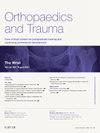肌腱生理学综述:损伤和疾病对结构、功能和愈合的影响
Q4 Medicine
引用次数: 0
摘要
肌腱是连接肌肉和骨骼的重要结构,在保持关节稳定的同时使运动成为可能。它们高度专业化的结构,包括排列整齐的I型胶原蛋白、蛋白聚糖、糖蛋白、弹性蛋白和独特的细胞外基质,确保了机械强度和柔韧性之间的平衡。当因急性创伤、慢性过度使用或全身性疾病而破坏时,肌腱完整性受损,导致疼痛、功能缺陷和严重的医疗负担。本文综述了肌腱解剖、细胞和分子调控以及损伤后多阶段修复过程的最新知识。它还探讨了当代的诊断方法,管理策略,从保守治疗和康复到先进的手术干预。以及新兴的生物疗法,如富血小板血浆(PRP)、干细胞应用和基因调节。此外,本综述强调了肌腱再生所固有的挑战,以及糖尿病、类风湿性关节炎和慢性肾脏疾病(CKD)等系统性疾病对肌腱完整性的影响。通过将实验室研究结果与临床实践相结合,本文提供了一个全面的资源,旨在支持知情决策,提高骨科护理患者的预后。本文章由计算机程序翻译,如有差异,请以英文原文为准。
An overview of tendon physiology: the impact of injury and disease on structure, function and healing
Tendons are vital structures that connect muscle to bone, enabling movement while maintaining joint stability. Their highly specialized architecture, comprising aligned type I collagen, proteoglycans, glycoproteins, elastin and a unique extracellular matrix ensures a balance between mechanical strength and flexibility. When disrupted by acute trauma, chronic overuse, or systemic diseases, tendon integrity is compromised, leading to pain, functional deficits, and a significant healthcare burden. This review synthesizes current knowledge on tendon anatomy, cellular and molecular regulation, and the multi-phase repair process following injury. It also explores contemporary diagnostic methods, management strategies, from conservative treatments and rehabilitation to advanced surgical interventions. As well as emerging biological therapies such as platelet-rich plasma (PRP), stem cell applications and gene modulation. Furthermore, this review highlights the challenges inherent in tendon regeneration, the impact of systemic conditions like diabetes, rheumatoid arthritis and chronic kidney disease (CKD) on tendon integrity. By bridging laboratory findings with clinical practice, this article offers a comprehensive resource intended to support informed decision-making and enhance patient outcomes in orthopaedic care.
求助全文
通过发布文献求助,成功后即可免费获取论文全文。
去求助
来源期刊

Orthopaedics and Trauma
Medicine-Orthopedics and Sports Medicine
CiteScore
1.00
自引率
0.00%
发文量
57
期刊介绍:
Orthopaedics and Trauma presents a unique collection of International review articles summarizing the current state of knowledge and research in orthopaedics. Each issue focuses on a specific topic, discussed in depth in a mini-symposium; other articles cover the areas of basic science, medicine, children/adults, trauma, imaging and historical review. There is also an annotation, self-assessment questions and a second opinion section. In this way the entire postgraduate syllabus will be covered in a 4-year cycle.
 求助内容:
求助内容: 应助结果提醒方式:
应助结果提醒方式:


